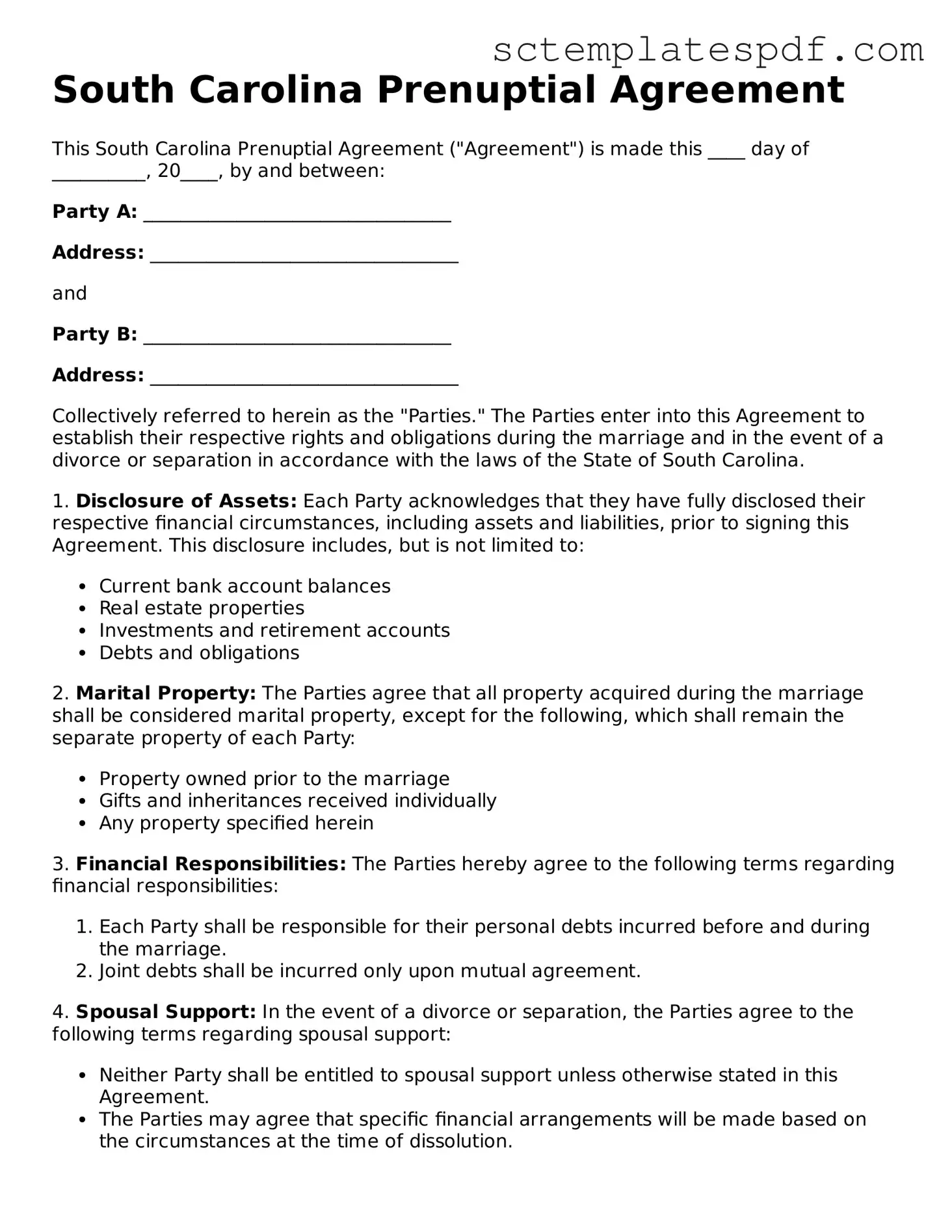Valid South Carolina Prenuptial Agreement Document
A South Carolina Prenuptial Agreement form is a legal document that outlines the division of assets and financial responsibilities between partners in the event of divorce or separation. This agreement helps couples clarify their financial rights and obligations before entering into marriage, providing peace of mind and reducing potential disputes. To ensure a smooth process, consider filling out the form by clicking the button below.
Fill Out Your Prenuptial Agreement
